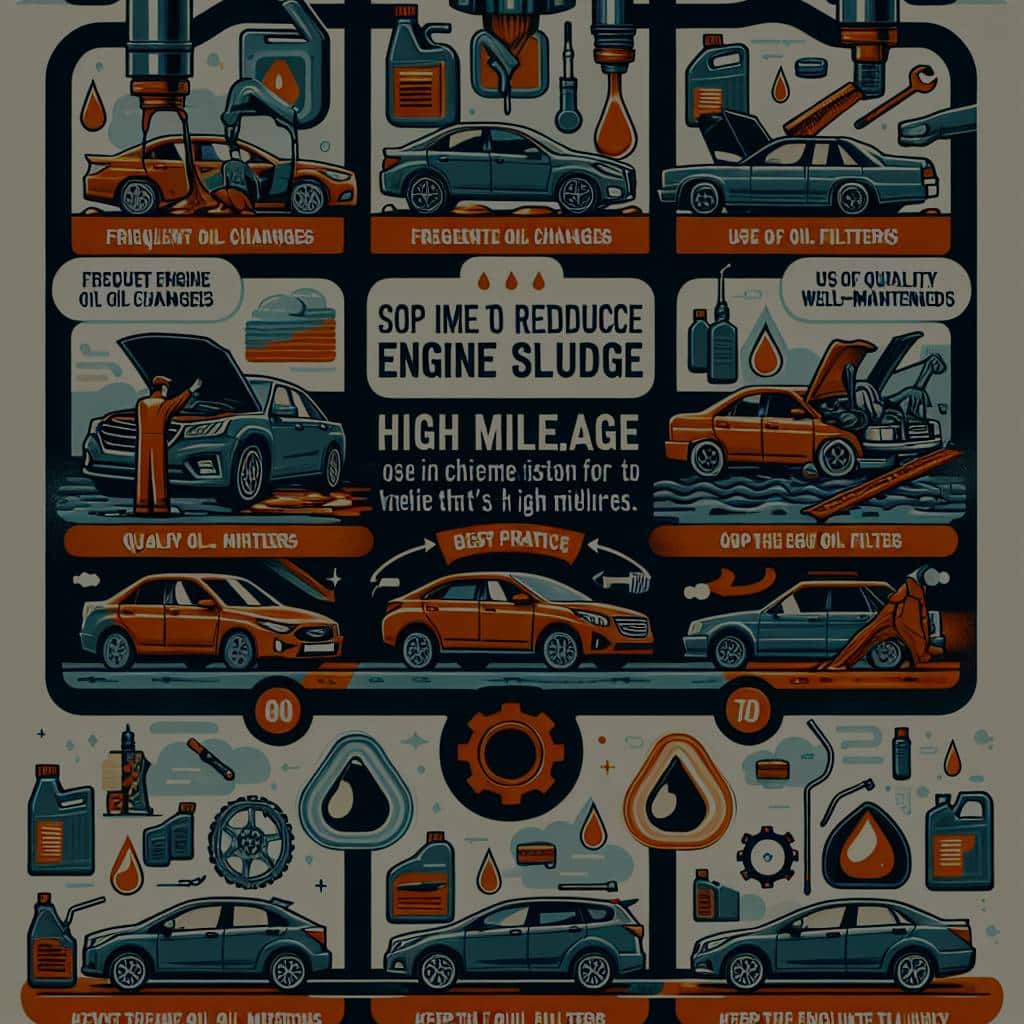Engine sludge is an unwelcome hitchhiker that can cause a significant impact on your vehicle’s performance. High-mileage vehicles are particularly susceptible to this issue as the probability of sludge accumulation increases over time. In this article, we will dive deep into the world of engine sludge, examining why it’s a problem, what causes it, and most importantly, how you can reduce it in high-mileage vehicles.
Understanding Engine Sludge and Its Causes
To effectively combat engine sludge, you first need to understand what it is and how it forms. Essentially, engine sludge is a thick, sticky substance that accumulates over time due to the breaking down of lubricating oil. This breakdown process can be amplified by a number of factors, such as infrequent oil changes, poor quality lubricants, and heavy driving conditions.
Additional reading : Wedding planning in France: the advantages of hiring a wedding planner
The Nitty-Gritty of Engine Sludge
Engine sludge, often likened to the consistency of ‘tar’, is composed of a mixture of oxidized oil and contaminants. These contaminants can include dust, metal shavings, and other particles. When oil breaks down, it loses its lubricating qualities and can no longer protect the engine from damage. The oil becomes more viscous, which leads to inadequate lubrication of the engine’s moving parts, resulting in damage and engine failure if not addressed.
The Culprits Behind Sludge Formation
You might wonder, what exactly causes engine oil to break down and form sludge? Firstly, poor maintenance habits such as infrequent oil changes can lead to sludge buildup. Over time, oil loses its ability to lubricate and cleanse the engine, creating an ideal environment for sludge formation.
This might interest you : How to Choose the Best Air Compressor for Mobile Tire Inflation for Road Trips?
Secondly, using low-quality lubricants can also contribute to sludge formation. These lubricants may not contain the necessary additives to keep the engine clean and well-lubricated. Additionally, harsh driving conditions like heavy traffic, towing, or long-distance trips can put extra strain on the engine and accelerate the breakdown of oil.
Strategies for Reducing Engine Sludge
Reducing engine sludge in high-mileage vehicles involves a combination of regular maintenance, the use of high-quality lubricants, and good driving habits.
Regular Vehicle Maintenance
As basic as it may sound, regular maintenance is a crucial step in preventing and reducing engine sludge. This includes scheduled oil changes, which help to remove the old, broken-down oil and replace it with fresh, clean oil.
While it’s recommended to change your oil every 3,000 miles, this can vary depending on your vehicle model and the type of oil you use. Always refer to your vehicle’s manual for the manufacturer’s recommended oil change intervals.
During maintenance, it’s also important to replace the oil filter. A dirty oil filter can contain trapped particles that could contribute to sludge formation when the new oil is introduced.
Use of High-Quality Lubricants
Not all engine oils are created equal. High-quality lubricants contain additives that help to keep the engine clean, prevent oil oxidation, and maintain the oil’s viscosity. These lubricants may cost more upfront, but they offer better protection against sludge and other forms of engine damage, saving you costly repairs in the long run.
Adopting Good Driving Habits
Your driving habits can also influence engine sludge formation. For instance, short trips that don’t allow the engine to fully warm up can leave unburned fuel and moisture in the system, which can contribute to sludge.
On the other hand, harsh driving conditions such as heavy traffic, towing, or long-distance trips can put even more strain on the engine and accelerate oil breakdown. To minimize this, try to strike a balance in your driving patterns, allowing your engine to warm up fully on regular drives, and avoiding unnecessarily harsh driving conditions where possible.
Cleaning Existing Engine Sludge
If your high-mileage vehicle already has signs of engine sludge, don’t panic. There are several methods to clean existing sludge, from oil additives to professional engine cleaning services.
Using Oil Additives
Oil additives designed to clean engine sludge can be a convenient and cost-effective solution. These additives work by breaking down the sludge into smaller particles, which are then removed during an oil change.
However, not all oil additives are suitable for all types of vehicles or engines. Therefore, it’s essential to consult with a professional or do some research before opting for an oil additive.
Professional Engine Cleaning
In severe cases of engine sludge, professional engine cleaning may be needed. This process typically involves the use of specialized chemicals and equipment to thoroughly clean the engine. While this method can be more costly than using oil additives, it can provide a more comprehensive cleaning and potentially extend the lifespan of your engine.
By understanding and applying the principles and strategies outlined above, you can take a proactive approach to managing engine sludge in your high-mileage vehicles. Remember, prevention is always better than cure, so start taking steps today to ensure your vehicle’s engine remains sludge-free.
The Role of Regular Inspections in Sludge Prevention
In addition to the strategies we’ve discussed, another key factor in reducing engine sludge is regular inspections. Routine inspections can help identify potential issues before they escalate, making it easier for you to take preventive measures against sludge formation.
Importance of Regular Inspections
Engine inspections are a proactive approach to vehicle maintenance. By regularly inspecting your engine, you can catch early signs of sludge buildup and take immediate action to prevent further accumulation. This could mean adjusting your oil change intervals, switching to a higher quality lubricant, or modifying your driving habits. Moreover, a professional mechanic can advise on any necessary repair or replacement parts to ensure your engine operates at its best.
During an inspection, mechanics will look for tell-tale signs of sludge, such as a decrease in engine power, increased fuel consumption, or difficulty in starting the engine. If sludge is detected during an inspection, a mechanic can recommend appropriate remedies, from oil additives to professional engine cleaning.
Conclusion
Engine sludge is a common problem in high-mileage vehicles. It is a thick, sticky substance formed from the breakdown of lubricating oil, often exacerbated by infrequent oil changes, poor quality lubricants, and harsh driving conditions. Engine sludge can cause significant damage to your vehicle’s engine and hamper its overall performance.
However, by understanding the causes and signs of engine sludge, you can take proactive steps to manage and reduce its accumulation. Regular vehicle maintenance, the use of high-quality lubricants, good driving habits, and regular engine inspections all play a vital role in this process.
If your vehicle already exhibits signs of sludge buildup, oil additives or professional engine cleaning may be necessary. Always consult a professional or conduct thorough research before choosing a treatment method.
Remember, prevention is always better than cure. Regular inspections and maintenance can go a long way in keeping your vehicle’s engine clean and in good working order. Start taking steps today to ensure a long, sludge-free life for your high-mileage vehicle.











